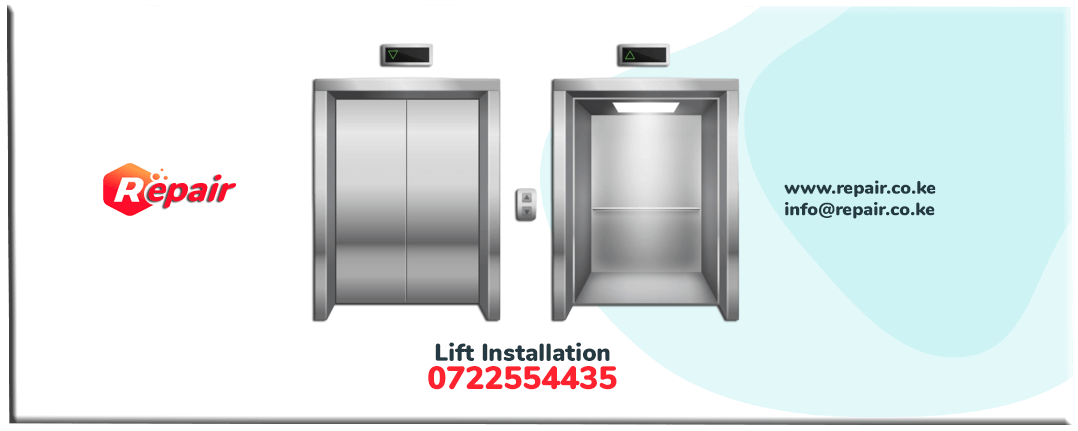Lift Installation in Nairobi: A Comprehensive Guide
Lift installation in Nairobi has gained significant attention in recent years due to the rapid urbanization and the rise in the construction of high-rise buildings. As the city expands, the demand for vertical transportation solutions becomes increasingly critical. Lifts, also known as elevators, are essential in providing easy and efficient movement within multi-story buildings, especially in commercial centers, residential apartments, and office complexes.
This article explores the key aspects of lift installation in Nairobi, including types of lifts, the installation process, factors to consider when choosing a lift, the importance of compliance with safety standards, and the role of local service providers.
Types of Lifts Installed in Nairobi
There are several types of lifts commonly installed in Nairobi, depending on the specific needs of the building and its users. Here are the main categories:
-
Passenger Lifts: These are the most common lifts used in Nairobi for transporting people within residential and commercial buildings. They vary in size, capacity, and speed, designed to serve high-traffic areas like malls, office buildings, and apartment complexes.
-
Freight/Service Lifts: These lifts are primarily used for transporting goods and equipment in commercial or industrial settings. For instance, in Nairobi, many shopping malls, warehouses, and hospitals have service lifts for carrying heavy loads.
-
Hospital/Bed Lifts: As the healthcare sector in Nairobi continues to grow, hospitals and medical centers require specialized lifts that can transport patients on stretchers or wheelchairs along with medical staff.
-
Panoramic Lifts: Popular in luxury hotels and office buildings, panoramic lifts come with glass walls that offer passengers a view as they ascend or descend. Their installation in Nairobi is often linked to architectural aesthetics and enhancing user experience.
-
Home Lifts: Increasingly, individual homeowners in Nairobi are opting for home lifts to add convenience and luxury to their properties, especially in multi-story houses.
The Lift Installation Process in Nairobi
The process of lift installation in Nairobi involves several stages, each requiring precision and adherence to local regulations and international safety standards.
1. Site Assessment and Planning
Before installation, the building site is assessed to determine the best lift model that fits the building’s needs. Engineers and lift consultants conduct site evaluations, measuring shaft dimensions, load-bearing capacity, and assessing accessibility. This phase is crucial to ensure the lift is safe and efficient.
2. Design and Customization
Depending on the type of lift and the client’s requirements, manufacturers design lifts to fit the building’s specifications. Some lifts, especially those for commercial use, may need customization in terms of capacity, interior design, or energy efficiency features. In Nairobi, lift designs also consider power consumption due to intermittent power supply challenges.
3. Lift Installation
Once the lift design is approved, installation begins. This involves fitting the mechanical components (like the motor, pulley system, and lift car) into the building’s elevator shaft. Electrical wiring, controls, and safety systems are then installed. The process of lift installation in Nairobi usually requires a team of skilled technicians, electricians, and engineers.
4. Testing and Safety Checks
After installation, the lift undergoes rigorous testing to ensure that it functions correctly. Safety features like emergency stops, alarms, overload protection, and backup power systems are checked. Compliance with Kenya Bureau of Standards (KEBS) regulations is mandatory for lift installation in Nairobi, ensuring the safety of all users.
5. Commissioning and Maintenance
Once tested and approved, the lift is ready for use. However, regular maintenance is critical to prevent breakdowns and ensure long-term performance. Many companies in Nairobi offer maintenance services as part of their lift installation packages.
Factors to Consider for Lift Installation in Nairobi
When planning lift installation in Nairobi, several factors come into play:
1. Building Type and Use
The type of building—whether it’s residential, commercial, industrial, or institutional—determines the kind of lift required. For instance, residential apartments require passenger lifts with medium capacity, while industrial settings may need heavy-duty freight lifts.
2. Capacity and Speed
Lift capacity, measured in kilograms or the number of people it can carry, must align with the building’s traffic. Similarly, the speed of the lift is crucial, especially in high-rise buildings. Modern lift systems in Nairobi offer fast, efficient movement while keeping energy consumption in check.
3. Energy Efficiency
Given the rising cost of electricity in Nairobi, energy efficiency is a key consideration. Advanced lifts are designed to use less energy, and some even incorporate regenerative drives that capture and reuse energy.
4. Safety Standards
Safety is paramount in lift installation in Nairobi. Choosing a reputable service provider ensures that the lift complies with both local and international safety standards, reducing the risk of accidents.
5. Budget and Long-term Costs
The initial cost of lift installation in Nairobi varies depending on the type of lift and the complexity of the installation. However, clients should also factor in the long-term costs of maintenance, repairs, and electricity consumption.
Safety Regulations for Lift Installation in Nairobi
Kenya has strict regulations to ensure the safety of lift users. The Kenya Bureau of Standards (KEBS) oversees the compliance of all lifts with established safety codes. The KEBS Standard KS 1886 outlines the requirements for installation, maintenance, and operation of lifts, ensuring that every lift installed in Nairobi meets global safety benchmarks.
Additionally, buildings in Nairobi are subject to safety inspections by local authorities, especially before they are handed over for occupancy. These inspections check that all safety measures—such as emergency lighting, communication systems, and load testing—are in place.
Finding Lift Installation Services in Nairobi
There are several companies offering lift installation in Nairobi, ranging from international brands to local firms. Some of the key players include KONE, Otis, Schindler, and Mitsubishi, as well as local installers who specialize in maintenance and service.
When selecting a lift installation company, it’s important to consider their reputation, experience, and after-sales service. Companies that offer comprehensive maintenance services help to extend the lifespan of the lift and ensure reliable operation over time.
Lift installation in Nairobi is a crucial service that supports the city’s growth by providing essential vertical transportation solutions. Whether for residential, commercial, or industrial buildings, lifts improve accessibility and convenience. As Nairobi continues to expand, the demand for high-quality, efficient, and safe lift systems will only increase. By understanding the process, considering key factors like building type and safety standards, and choosing reliable installation services, developers and property owners can ensure the success of their lift installation projects in Nairobi

